Happy New Year, everyone!
I thought I’d start the 2018 posts with a nice quick cleanup of a 1980’s-vintage Brigham 4-Dot Calabriar. Long a staple shape in the Brigham Pipes catalog, the Calabriar is a briar pipe carved in a full-bent Calabash shape. This example, sporting a bevelled rim, differs slightly from the classic Calabriar shape which is usually cut straight across the top of the bowl. I rather like the bevel; it reminds me of my Peterson B10 pipe.
As you can see from the pics below, the pipe hit the worktable in rather good estate condition. The smooth finish was in great shape, highlighting a nice mix of cross and birdseye grain, and though the rim showed some light lava buildup and a slight darkening, the briar was free of dents, dings and scratches. This pipe had obviously been cared for by its previous owner.


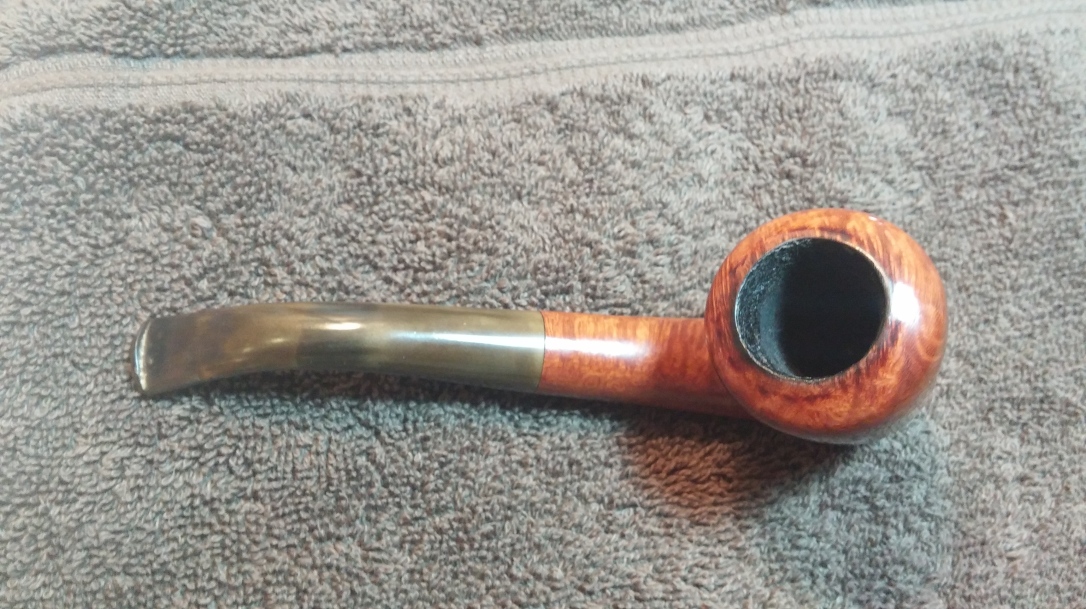

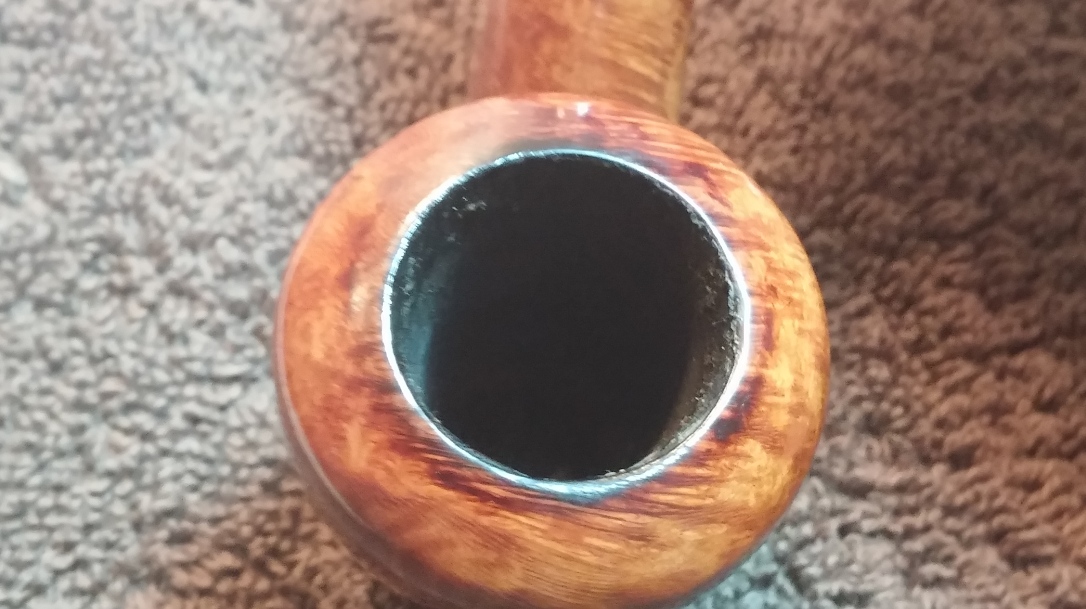
The main issue with the pipe was the stem, which was heavily oxidazed. Blotches of light and dark oxidation covered the stem from shank to button, practically obscuring the four brass pins inlayed in the stem flank. There were also a few light tooth dents in the bit that would have to be addressed.
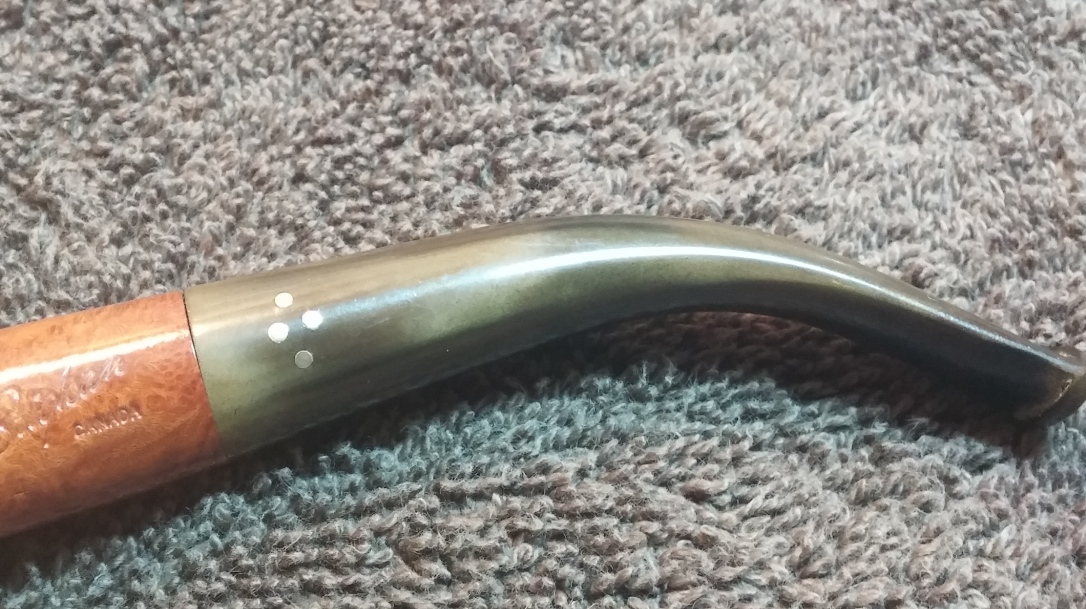
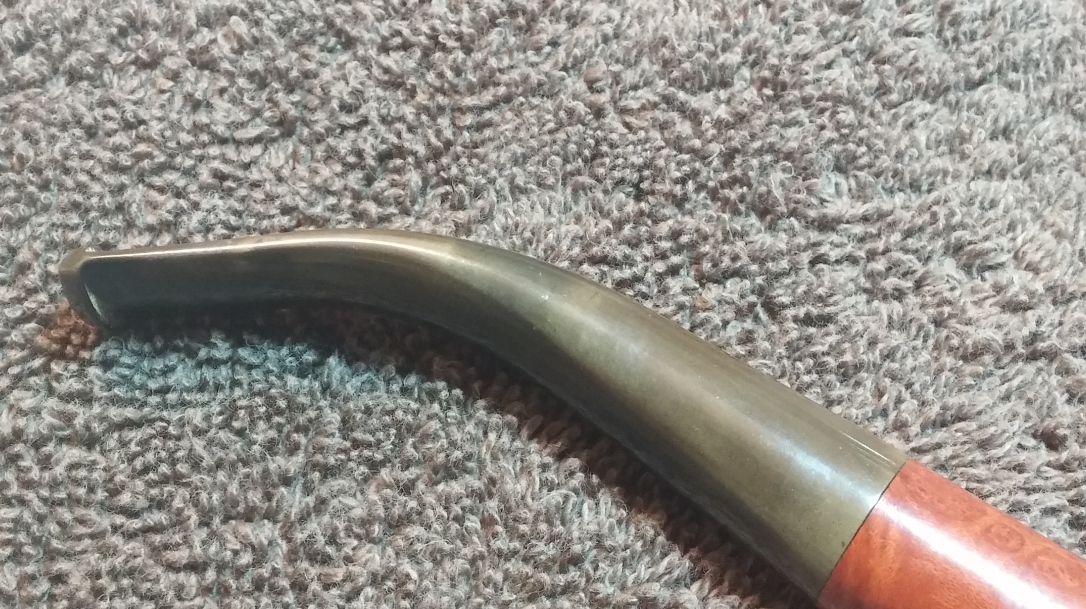

The pipe is stamped simply “Brigham” over “Canada” over “4”. The first two stamps denote a 1980’s production era, while the “4” represents a 4-Dot grade pipe. Missing is the 2-digit shape code that traditionally follows the grade number. In this case, the Calabriar is a Shape 47, so the full three-digit shape code should read “447”.
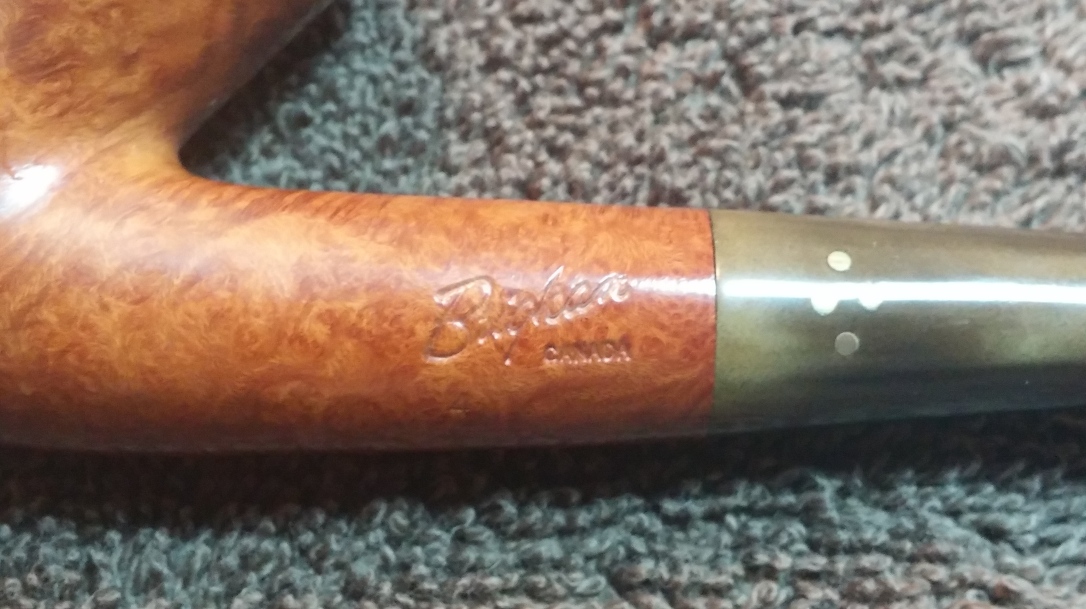
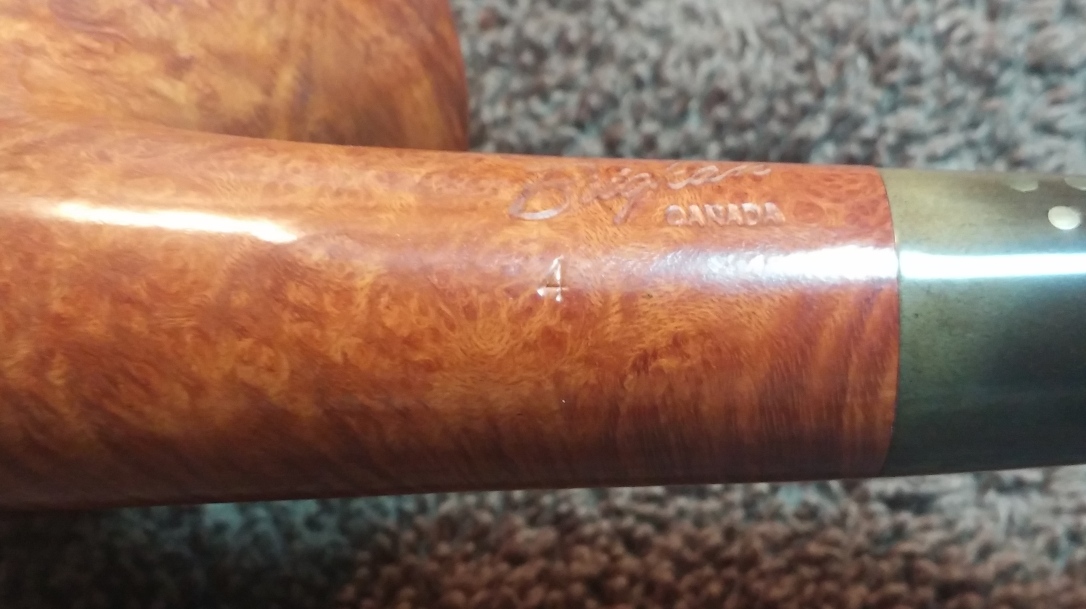
I popped the stem into a bath of Oxyclean and warm water to start lifting the oxidation fro the vulcanite while I worked on the briar.
A few cotton pads dipped in alcohol stripped the exterior surface of the briar of dirt, grease and old wax. The alcohol also dissolved the vast majority of the rim tars.
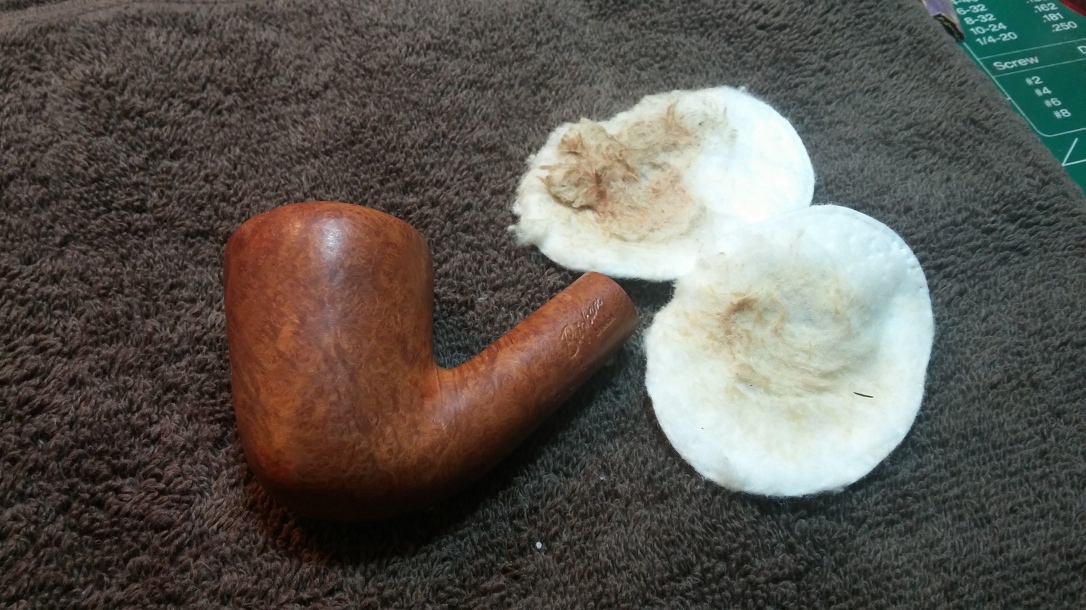
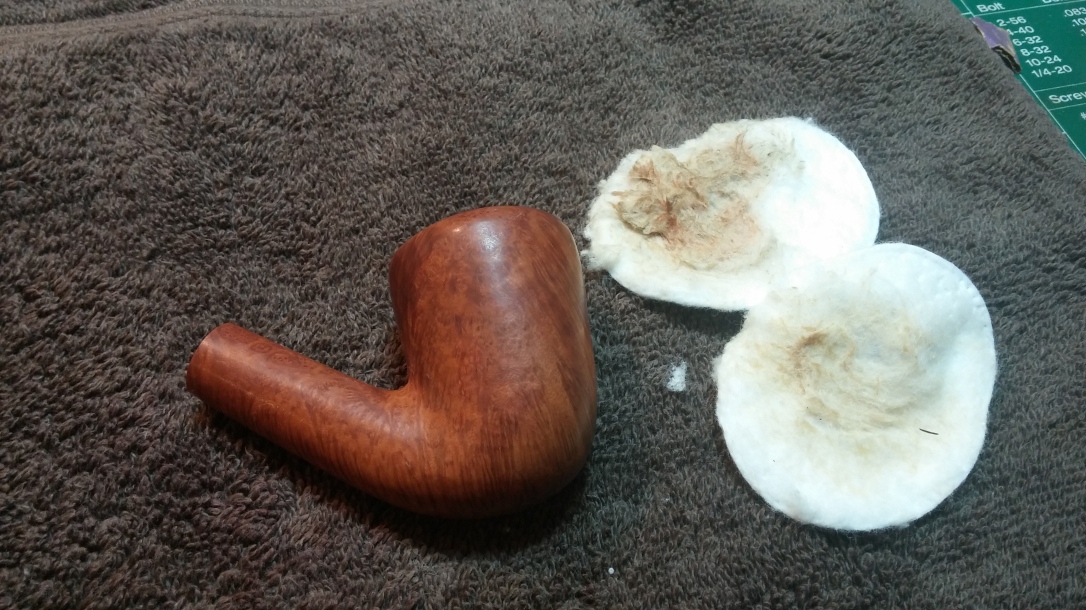
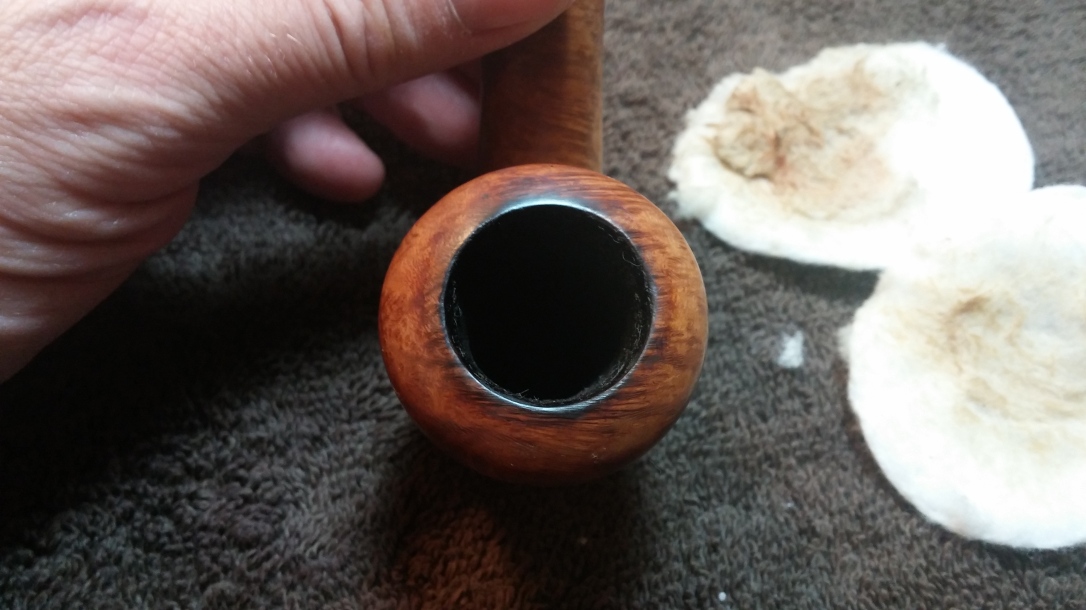
There wasn’t much cake to ream out of the chamber but enough to warrant the use of my Castleford reamer and a scrap of sandpaper to smooth things out. With the chamber cleared, I used 800 and 2000-grit wet sandpapers to finish tidying the rim surface. There is some nice cross-grain coming out!
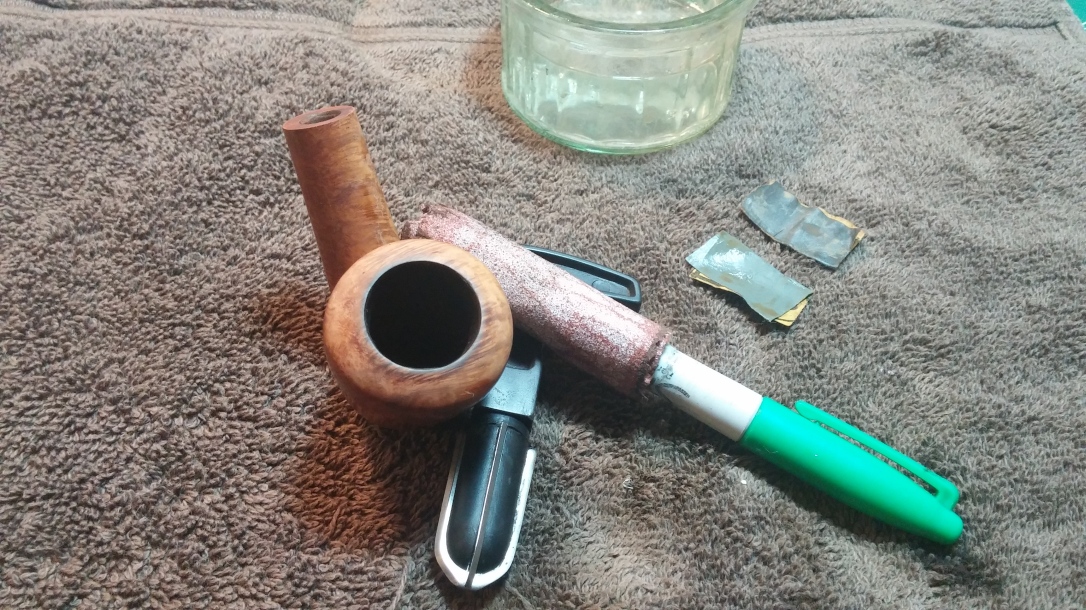
Satisfied with the outer state of the briar, I moved to the internals, scrubbing away the old tars from mortise and airway with a shank brush, cotton swabs, pipe cleaners and alcohol. Compared to the rest of the pipe the internals were surprisingly dirty, though not nearly as bad as most estate pipes I’ve dealt with.

I completed work on the stummel by polishing the briar with micromesh sanding pads in 2400-4000 grits. This really brought up the shine and definition in the grain.
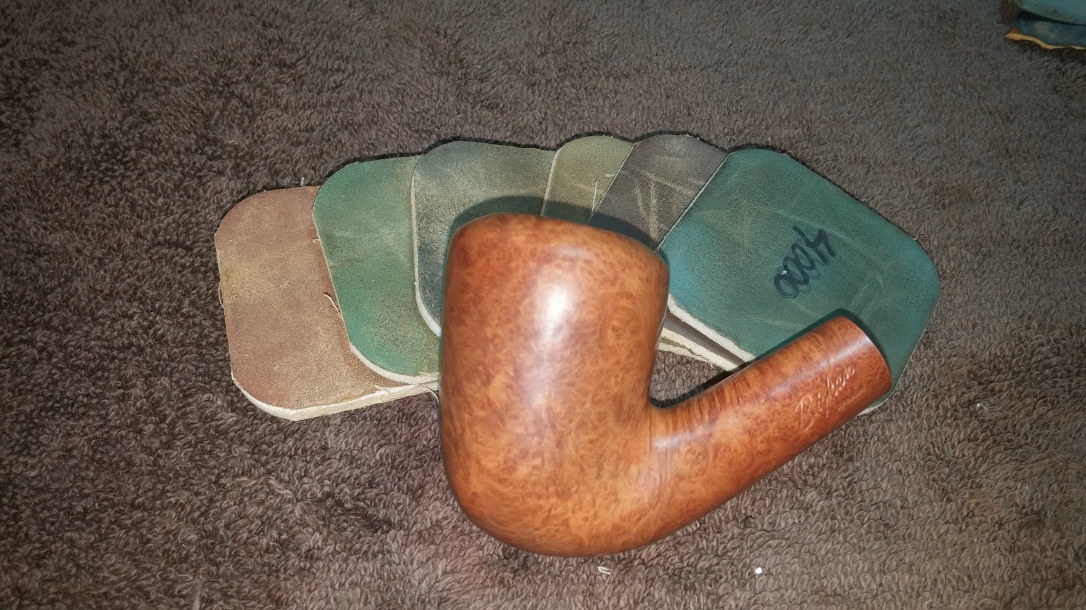
Setting the briar aside, I pulled the stem from its Oxyclean soak and scrubbed away the softened oxidation with 0000 steel wool and Magic Eraser. I cleaned the internals with more pipe cleaners, cotton pads and alcohol. The shank brush proved very useful here as well.
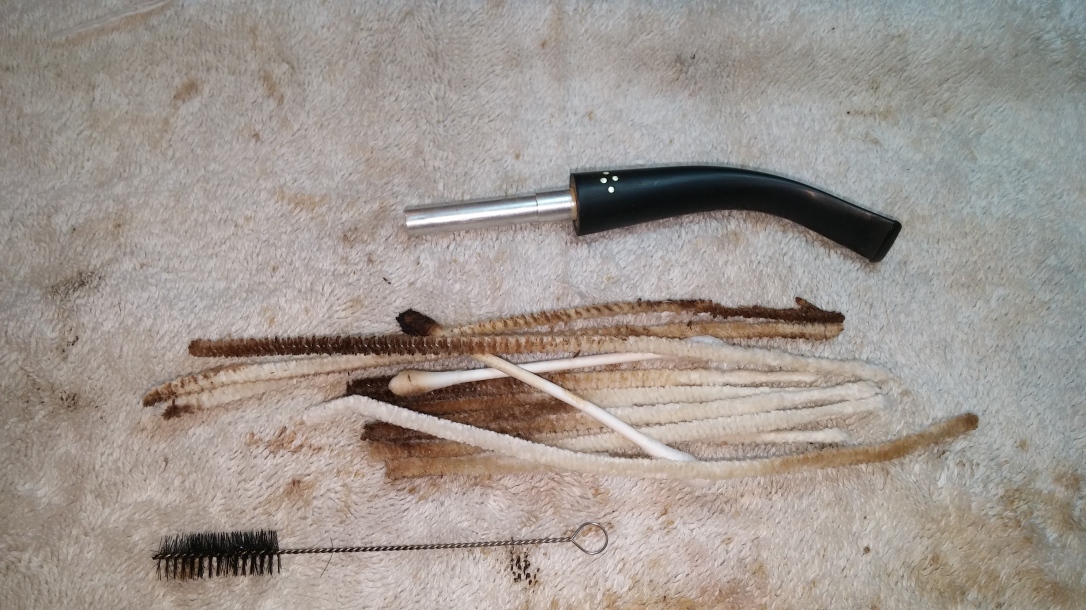
I was able to lift the worst of the tooth dents with heat on this stem, painting a lighter flame over the depressed vulcanite. The heat softened the stem and allowed the vulcanite to “remember” its previous position, puffing back up into place.
To remove the last of the stubborn oxidation and smooth out the tooth chatter, I sanded the stem with various grades of sandpaper, starting with 220 and 320-grit dry papers and finishing with 800 and 2000-grit wet papers.
I find, at least with the particular papers I’m using at the moment, that refreshing the abrasive regularly helps keep the work to a minimum; fresh sandpaper just works so much better than old, worn stuff.

Then it was off to the buffer for a quick run of White Diamond compound and several coats of Carnauba wax to shine and protect the restored pipe.
I knew this Calabriar would be a beauty after a day at the pipe spa, and I was not disappointed. The lovely honey-brown finish is deep and lustrous, showcasing the briar’s grain perfectly. The stem, once so bleached and blotchy, now shines a deep black against the golden sparkle of the brass Brigham Dots. Add in the sinuously elegant shape and copious bowl dimensions, and you’ve got a real winner on your hands here.
I’ll be adding this lovely 4-Dot Calabriar to my own rack and collection and look forward to filling it with one of my favourite cold-weather blends soon.
Thanks for joining me for this inaugural DadsPipes 2018 pipe restoration. I’m looking forward to sharing many more pipe tales with you as the year progresses. Until next time, Happy Piping!
Here’s the finished pipe.



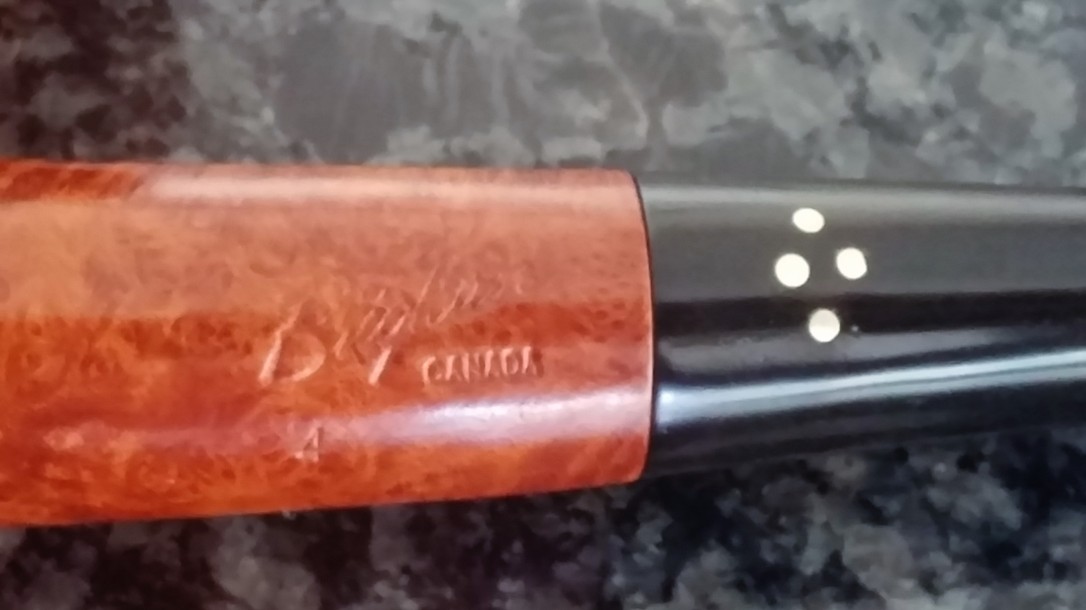
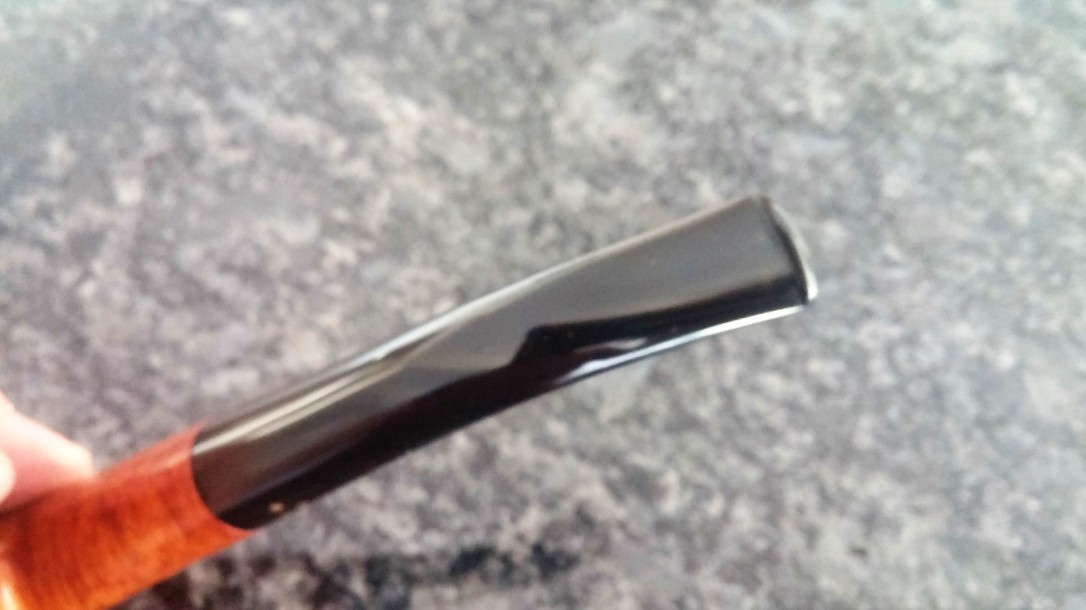
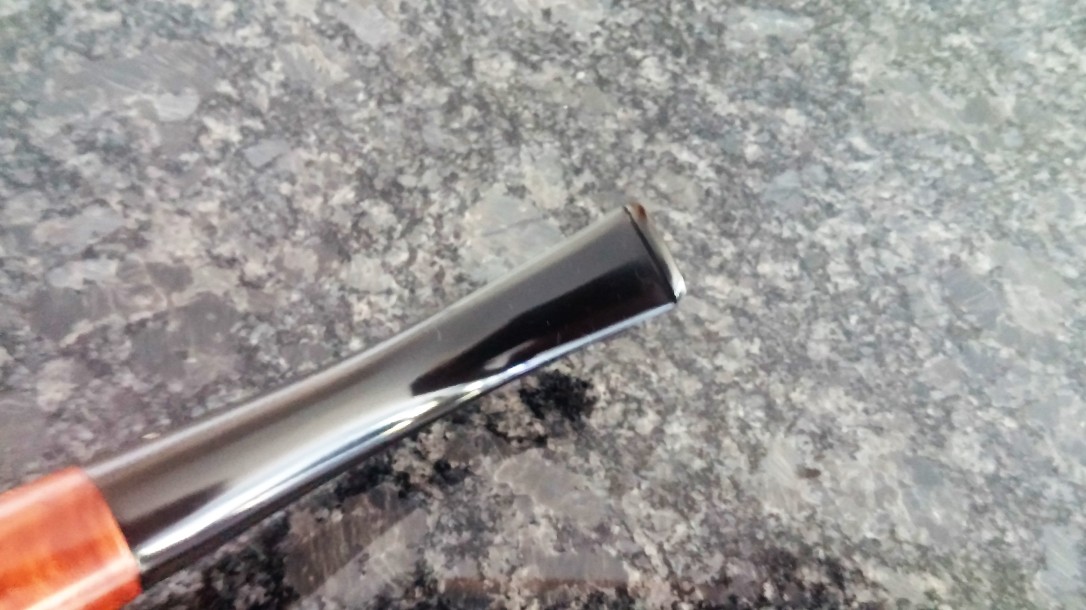
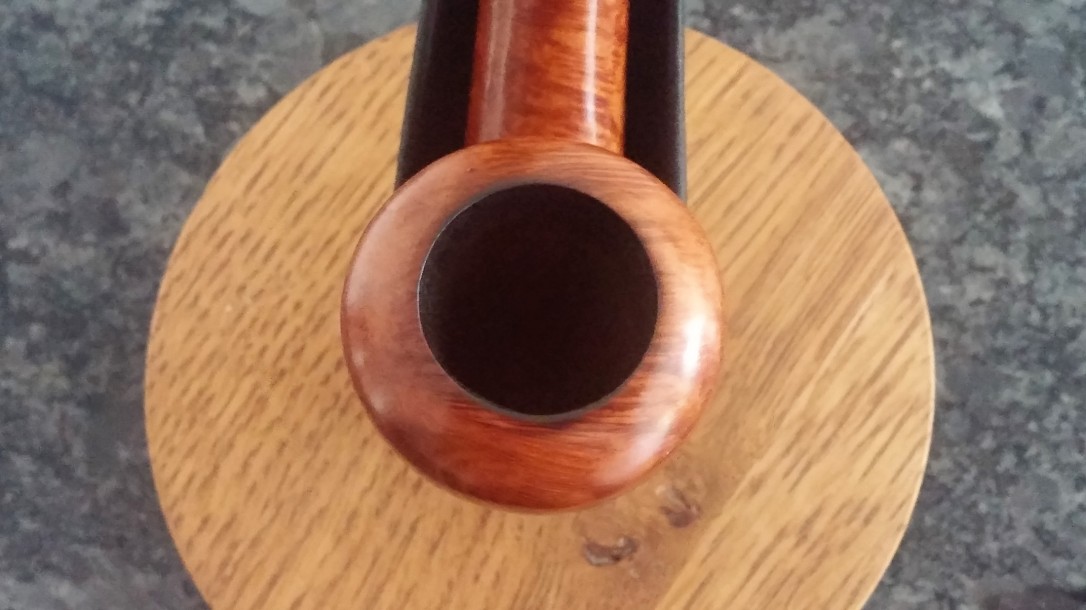
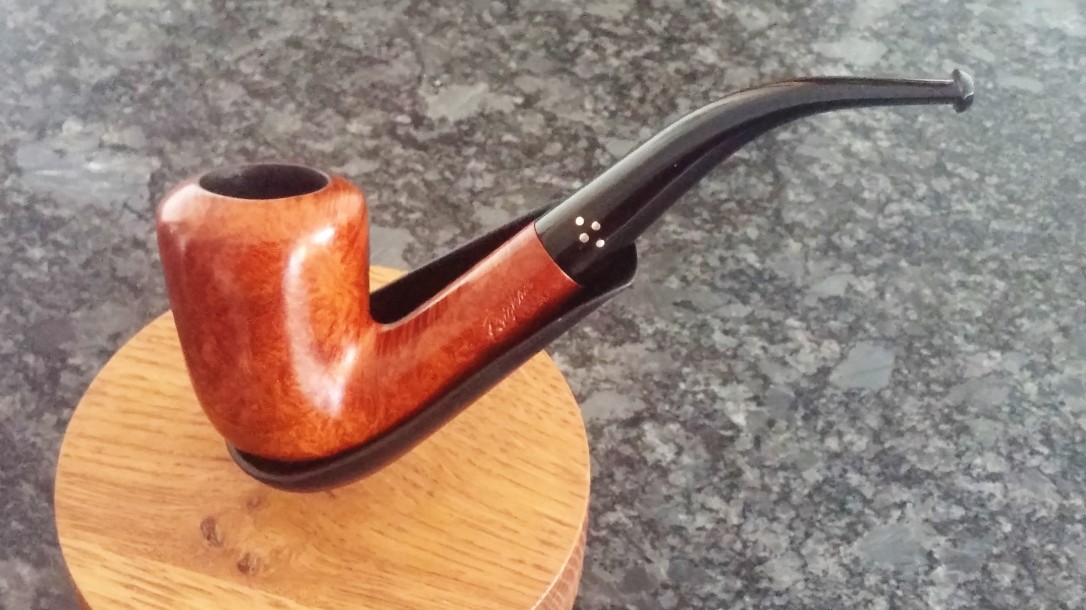
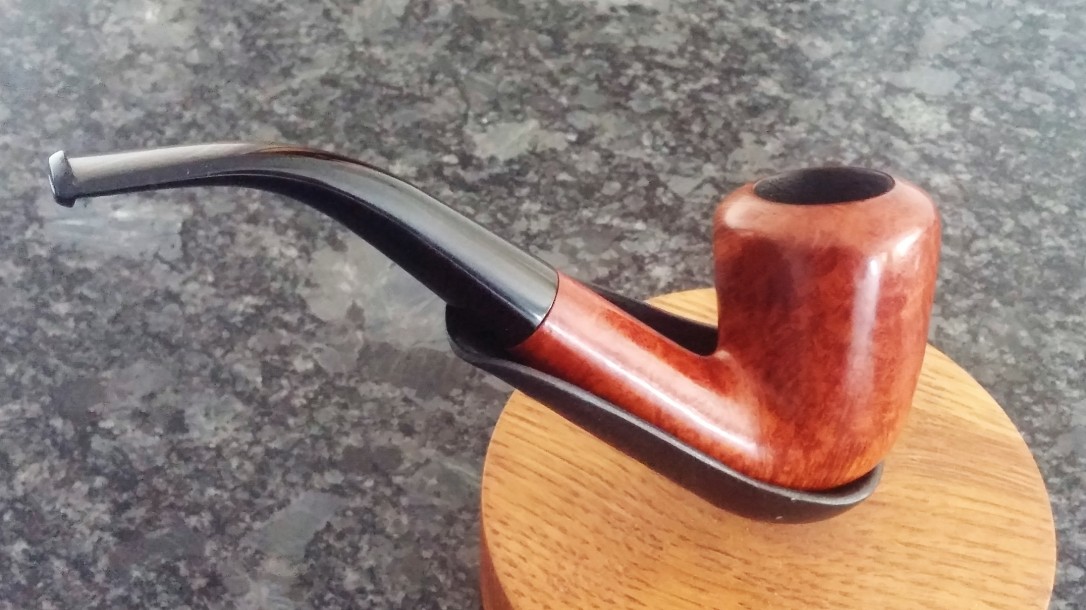

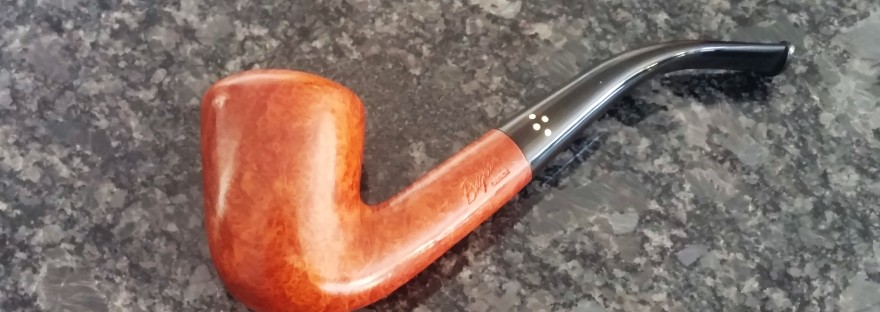
Charles, the pipe looks really sweet now. What are your preferred winter tobacco blends?
LikeLiked by 1 person
Thanks Todd. I go for bigger flavours when the temps dip. I find subtle blends get lost in the cold. It’s been -20C all week here so a bit too cold for me to be outside but my garage smells a lot like Dark Strong Kentucky, Nightcap & Sobranie 😀
LikeLike
Is the garage heated? If you like Nightcap and Sobranie, have you tried Blatter’s Reserve?
LikeLiked by 1 person
My shop heater gives up at about -10C so it hasn’t been very comfortable lately. Supposed to warm a bit next week though!
I haven’t gad a chance to try any of the Blatter blends yet but they’re on my list. 😀
LikeLike